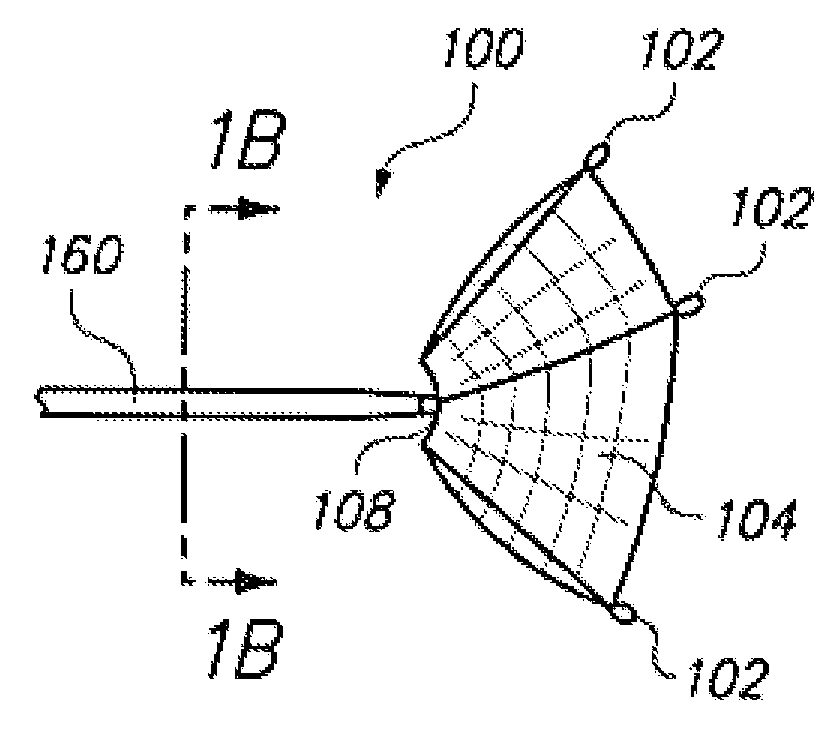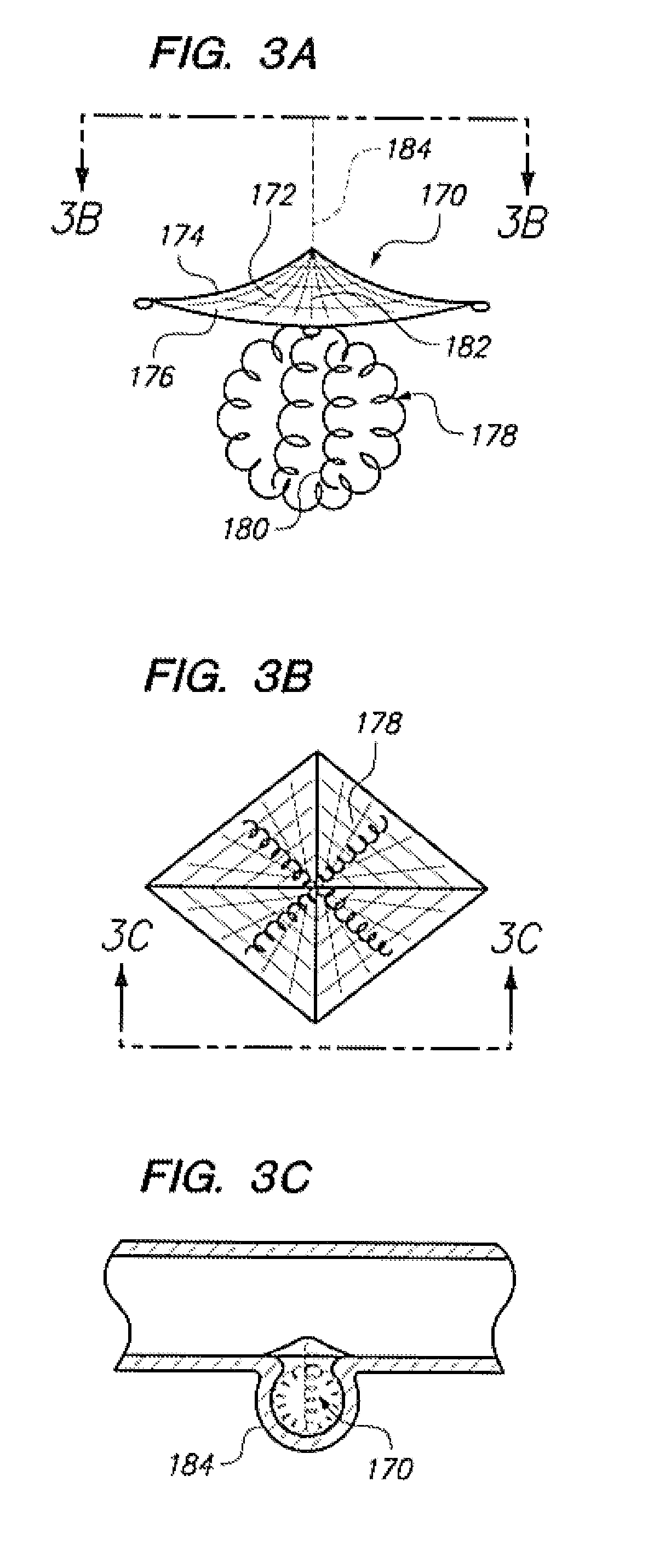Detachable aneurysm neck closure patch
a neck closure and aneurysm technology, applied in the field of detachable aneurysm neck closure patch, can solve the problems of difficult or impossible retrieval of material, difficult placement of mixture, and particularly acute medical risk of aneurysms
- Summary
- Abstract
- Description
- Claims
- Application Information
AI Technical Summary
Benefits of technology
Problems solved by technology
Method used
Image
Examples
Embodiment Construction
[0034]This invention relates to a device and a procedure for stabilizing the position and, usually, the structure of vaso-occlusive devices which are placed in a target occlusion site, usually an aneurysm. The retaining devices or patches prevent the potential migration of those one or more occlusive devices (e.g., helically wound coils) from that target occlusion site, by forming a barrier at the entrance zone to the aneurysm where it meets a feeding vessel.
[0035]FIG. 1A shows in side view one variation of an aneurysm patch (100) made according to this invention. Specifically, FIG. 1A shows an aneurysm patch (100) having a number of radially extending members (102), which may have blunted tips to prevent trauma to the arteries in which they are placed. A slight bend may be noticed in the radially extending members (102). This bend helps release the aneurysm patch (100) from the delivery catheter upon deployment. As will be shown below in more detail, the radially extending members ...
PUM
 Login to View More
Login to View More Abstract
Description
Claims
Application Information
 Login to View More
Login to View More - R&D
- Intellectual Property
- Life Sciences
- Materials
- Tech Scout
- Unparalleled Data Quality
- Higher Quality Content
- 60% Fewer Hallucinations
Browse by: Latest US Patents, China's latest patents, Technical Efficacy Thesaurus, Application Domain, Technology Topic, Popular Technical Reports.
© 2025 PatSnap. All rights reserved.Legal|Privacy policy|Modern Slavery Act Transparency Statement|Sitemap|About US| Contact US: help@patsnap.com



